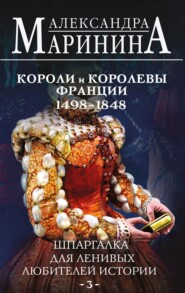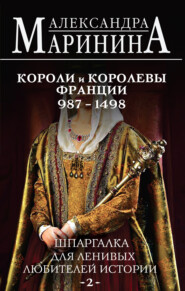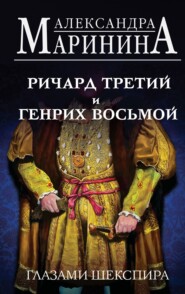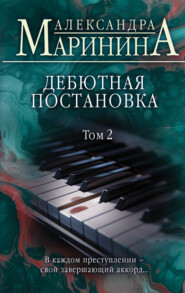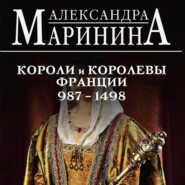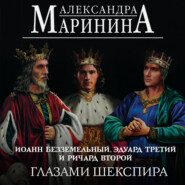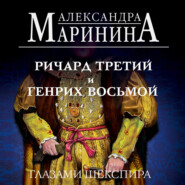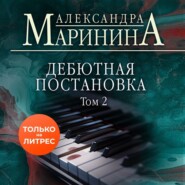По всем вопросам обращайтесь на: info@litportal.ru
(©) 2003-2025.
✖
The Stylist
Настройки чтения
Размер шрифта
Высота строк
Поля
She looked at the publishing information in the back. It was sent to the compositor on January 26, 1995, and signed off for the printer of March 3, 1995. That was over a year ago, and the ink was still rubbing off. And there was the smell. That wasn’t possible. This must be a second printing. But why was the old information on the page? It looked like the leftover print run from last year.
She rummaged in her purse and got out the second copy – the one Solovyov gave her from his shelves. The books were exactly the same, with the same publishing information. But this book did not smell of fresh ink and did not smudge. How could that be if both books were printed at the same time, a year ago?
Then her mind moved to the mathematical. The book seller had told her that popular books went at a rate of ten a day. All right, say five. And how many book stalls were there in Moscow? Around three hundred. Say only two hundred. Five books at two hundred stalls is a thousand a day. How many were printed? The information said 70,000 copies. That’s seventy days of sales. And only in Moscow. But Sherkhan sold books in other cities, too. That information page listed their official dealers – twelve companies in twelve regions of Russia. Assume that half the print run stayed in Moscow and the other half was sent out to the other cities. Thirty-five thousand in Moscow. Thirty-five days of sales. What if they sold five a day only the first week and then it slowed down? But the book seller at the station said that Secret of Time had been in print around a month and he had sold seven books just today. No, it didn’t work. The Blade could not be available on the shelves for a year if they printed only 70,000 copies. It should have stopped selling last May or June. Say, even August. But this was April… Where did this book she bought at the station come from?
The key turned in the lock and Lyoshka was home.
“How was your lecture?” Nastya asked, rubbing her cheek against his shoulder.
“Fine. Why haven’t you eaten, you brazen thing?”
“I was waiting for you. You know I can’t eat alone, it’s too boring. We’ll eat together.”
“Yeah, yeah,” Chistyakov snorted. “Good old Lyoshka will heat it up and serve it and then we’ll eat. All right, stay where you are, I know you’re never going to change. What are you reading?”
“An Eastern Best Seller from Japanese-American life.”
“And the second book?”
“Same thing. They’re the same.”
“Did you buy it for someone?”
“No. Listen, let me run something past you.”
Lyoshka had already started reheating the hash and was slicing tomatoes on the cutting board, his back to Nastya.
“I’m listening,” he said without turning.
“You have to look at something.”
“Then wait a bit.”
He finished the salad, wiped his hands on a towel, and came over to the table.
“Take a look at these two books, please,” Nastya asked. “Tell me what you think.”
“Other than the fact that they are exactly the same?”
“Yes.”
Lyoshka opened both books and read the title page closely. Nastya didn’t think there was anything interesting there. On top in black letters was the author’s name, Akira Hakahara. In the middle of the page, the title, The Blade. On the bottom the logo of Sherkhan Books, the face of a roaring tiger.
“But they are different,” he said, looking up in surprise at his wife.
“What makes you say so.”
“They are made differently. This one” – he showed her Solovyov’s copy, “is printed photomechanically, and the other photoelectrically.”
“I don’t see it. What shows that?”
“The letters are colored in different ways. With the photomechanical method, the ink is even, but here, in the second book, you can see that the ink is much paler on the bottom half of the letters than the top. Take a look.”
Now Nastya could see it. Rather, she had seen it before, but a person who didn’t know about printing would not have paid any attention.
“What does it mean?” she asked slowly, realizing that she had come across something important.
“It means that these books are not from the same print run.
By the way, why are you asking? Do you have a suspicion about something?”
“The ink is smudging,” she explained, showing him her blackened fingertip. “It’s completely fresh. But the publishing information says that it was printed a year ago. Oh, Lyoshka, something’s burning!”
“Damn!” He moved to the stove and turned off the flame under the skillet. “The hash is burnt. You and your printing mystery.”
“I’m sorry,” Nastya said piteously. “I didn’t mean to.”
They ate in silence but then Nastya said, “Lyoshka, what is a photomechanical method?”
“Forget it. It’s too long and hard to explain.”
“Make it short and simple, for dummies. Very general. I just want to know what distinguishes one method from the other.” “Why do you care so much?”
“Not so much, but I do want to know. Not for any crime that I’m working on. But you know that I don’t like not understanding.”
“First the manuscript is composed on a computer and an original mock up is made. Then film – slides – is made from the original. Got that?”
“So far.”
“That part is the same for both methods. Then come the differences. With the mechanical process, they make a matrix from the slides. A matrix is good for about fifty thousand prints. If the print run is for more than fifty thousand, they made a second matrix. With electrography, copies are made with photocopying technology. A kind of risograph, if you know what that is.”
“I don’t, but that’s not really important. I’ve grasped the main differences. Lyoshka, why have a print run that’s not divisible by fifty thousand?”
“What do you mean, why? Pass the ketchup, please.”
“Here. I want to know why people print more than fifty thousand but less than one hundred thousand. If you have to make a second set of matrices anyway, why not use them fully. Right?”
“It may not pay,” he said with a shrug. “They may not be able to sell a hundred thousand, so the cost of paper and jackets is wasted and the books will just take up space in a warehouse. Fifty is not enough, a hundred too much. That’s all.”
“Then there’s something else I don’t get. Why print a book by photocopy if you have the matrices for another thirty thousand copies. Are the matrices destroyed once a book has been printed?”
“Depends on the contract. They might, they might not. Why are you hung up on this?”
“Curiosity. Lyoshka, it looks like we have tax evasion here, pure and simple. The publishing house is not as stupid as your wife. They probably use the matrices all the way and print a hundred thousand. But in the information they put seventy thousand, and that’s their tax base. The remaining thirty thousand they sell but don’t pay taxes on. After a while they take the slides and do copies. The publishing information is the same and everybody thinks that they’re still selling remaining parts of the original print run, which was actually completed and taxed. It’s important that the book be a popular one. Good idea, huh?” “Yep,” he agreed. “I just don’t understand what’s it to you. Are you planning to switch jobs and move to the tax police? Or be a publishing lawyer?”
“No, honey, I’m not going anywhere. I’m just solving a puzzle for my mental exercise.”
“Really?” Lyoshka raised his eyebrows. “And here I thought you planning to defend your friend Solovyov, who was being hurt by the big bad greedy publishers.”






